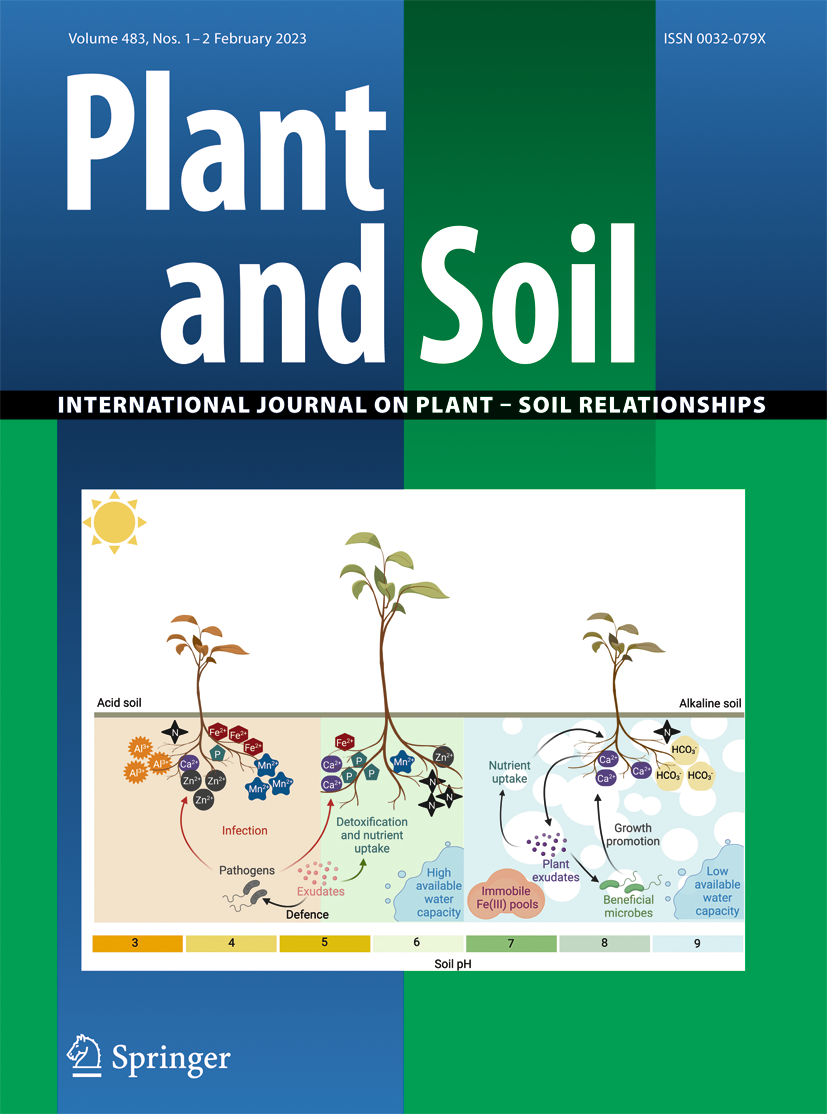doi.org/10.1007/BF00008069
Preview meta tags from the doi.org website.
Linked Hostnames
18- 79 links toscholar.google.com
- 25 links tolink.springer.com
- 22 links todoi.org
- 10 links towww.springernature.com
- 4 links towww.ncbi.nlm.nih.gov
- 2 links tocitation-needed.springer.com
- 2 links toscholar.google.co.uk
- 2 links tosupport.springernature.com
Thumbnail

Search Engine Appearance
https://doi.org/10.1007/BF00008069
Strategies of plants for acquisition of iron - Plant and Soil
Two different types of root response to Fe deficiency (strategies) have been identified in species of the Plant Kingdom. In Strategy I which occurs in all
Bing
Strategies of plants for acquisition of iron - Plant and Soil
https://doi.org/10.1007/BF00008069
Two different types of root response to Fe deficiency (strategies) have been identified in species of the Plant Kingdom. In Strategy I which occurs in all
DuckDuckGo
Strategies of plants for acquisition of iron - Plant and Soil
Two different types of root response to Fe deficiency (strategies) have been identified in species of the Plant Kingdom. In Strategy I which occurs in all
General Meta Tags
146- titleStrategies of plants for acquisition of iron | Plant and Soil
- charsetUTF-8
- X-UA-CompatibleIE=edge
- applicable-devicepc,mobile
- viewportwidth=device-width, initial-scale=1
Open Graph Meta Tags
6- og:urlhttps://link.springer.com/article/10.1007/BF00008069
- og:typearticle
- og:site_nameSpringerLink
- og:titleStrategies of plants for acquisition of iron - Plant and Soil
- og:descriptionTwo different types of root response to Fe deficiency (strategies) have been identified in species of the Plant Kingdom. In Strategy I which occurs in all plant species except grasses, a plasma membrane-bound reductase is induced with enhanced net excretion of protons. Often the release of reductants/chelators is also higher. In Strategy II which is confined to grasses, there is an increase in the biosynthesis and secretion of phytosiderophores which form chelates with FeIII. Uptake of FeIII phytosiderophores is mediated by a specific transporter in the plasma membrane of root cells of grasses. From results based mainly on long-term studies under non-axenic conditions this classification into two strategies has been questioned, and the utilization of Fe from microbial siderophores has been considered as an alternative strategy particularly in grasses. Possible reasons for controversial results are discussed in some detail. The numerous effects of microorganisms in non-axenic cultures, and the as yet inadequate characterization of the so-called standard (basic) reductase present major limitations to understanding different mechanisms of Fe acquisition. In comparison with the progress made in identifying the cellular mechanisms of root responses in Strategy I and Strategy II plants, our understanding is poor concerning the processes taking place in the apoplasm of root rhizodermal cells and of the role of low-molecular-weight root exudates and siderophores in Fe acquisition of plants growing in soils of differing Fe availability.
Twitter Meta Tags
6- twitter:site@SpringerLink
- twitter:cardsummary_large_image
- twitter:image:altContent cover image
- twitter:titleStrategies of plants for acquisition of iron
- twitter:descriptionPlant and Soil - Two different types of root response to Fe deficiency (strategies) have been identified in species of the Plant Kingdom. In Strategy I which occurs in all plant species except...
Item Prop Meta Tags
3- position1
- position2
- position3
Link Tags
9- apple-touch-icon/oscar-static/img/favicons/darwin/apple-touch-icon-92e819bf8a.png
- canonicalhttps://link.springer.com/article/10.1007/BF00008069
- icon/oscar-static/img/favicons/darwin/android-chrome-192x192-6f081ca7e5.png
- icon/oscar-static/img/favicons/darwin/favicon-32x32-1435da3e82.png
- icon/oscar-static/img/favicons/darwin/favicon-16x16-ed57f42bd2.png
Links
156- http://scholar.google.com/scholar_lookup?&title=An%20Escherichia%20coli%20bioassay%20of%20individual%20siderophores%20in%20soil&journal=J.%20Plant%20Nutr.&volume=11&pages=915-924&publication_year=1988&author=Nelson%2CM&author=Cooper%2CC%20R&author=Crowley%2CD%20E&author=Reid%2CC%20P%20P&author=Szaniszlo%2CP%20J
- http://scholar.google.com/scholar_lookup?&title=An%20iron%20deficiency-specific%20cDNA%20from%20barley%20roots%20having%20two%20homologous%20cysteine-rich%20MT%20domains&journal=Plant%20Mol.%20Biol.&doi=10.1007%2FBF00040651&volume=17&pages=531-533&publication_year=1991&author=Okumura%2CN&author=Nishizawa%2CN%20K&author=Umehara%2CY&author=Mori%2CS
- http://scholar.google.com/scholar_lookup?&title=Bicarbonate%20inhibits%20Fe-stress%20response%20and%20Fe%20uptake-translocation%20of%20chlorosis-susceptible%20soybean%20cultivars&journal=J.%20Plant%20Nutr.&volume=7&pages=699-714&publication_year=1984&author=Fleming%2CA%20L&author=Chaney%2CR%20L&author=Coulombe%2CB%20A
- http://scholar.google.com/scholar_lookup?&title=Biosynthesis%20of%20nicotianamine%20in%20the%20suspension-cultured%20cells%20of%20tobacco%20%28Nicotiana%20megalosiphon%29&journal=Biol.%20Metals&doi=10.1007%2FBF01142552&volume=2&pages=142-145&publication_year=1989&author=Shojima%2CS&author=Nishizawa%2CN%20K&author=Fushiya%2CS&author=Nozoe%2CS&author=Kumashiro%2C&author=Nagata%2CT&author=Ohata%2CT&author=Mori%2CS
- http://scholar.google.com/scholar_lookup?&title=Boron%20and%20cell%20walls&journal=Curr.%20Top.%20Plant%20Biochem.%20Physiol.&volume=10&pages=149-178&publication_year=1991&author=Loomis%2CW%20D&author=Durst%2CR%20W